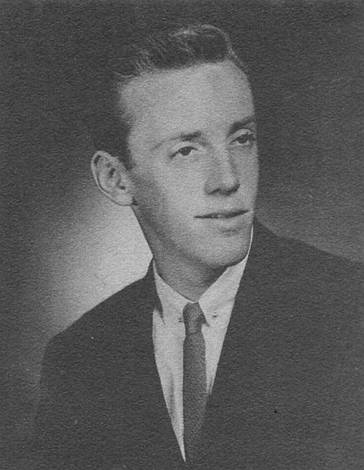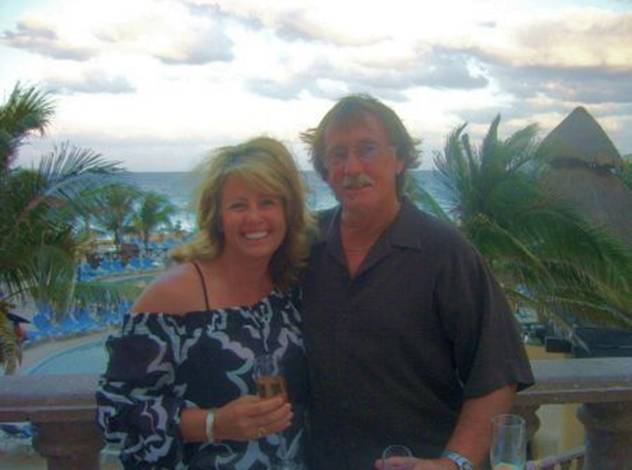Autobiography of Richard Simpson, Class of 1961
One of the most common pieces of advice and often a necessary requirement for vinyl mastering is monoing the bass frequencies. It means that mastering engineers and pressing plants will first advise you to master your music with everything below 150, 200hz, or 300 hertz in mono for a smooth transition to the vinyl format. Indeed, stereo low-end may cause serious difficulties to cut a master disk, it may also cause playback issues such as a skipping record. But is this always the case?
RPM Records spoke with Richard Simpson, cutting engineer for RCA, Contemporary, and Erika Records. Holding a solid 50 years of experience in record cutting, winning a number of Gold Records and working within the most professional mastering environment, Richard shared his insights of the record cutting craft and drew a clear picture of what it takes to cut stereo low-end explaining why you may want to take a risk in doing so.
Early Days at RCA
I started working for RCA RECORDING STUDIOS in New York in 1966. First in quality control obtaining a good background in what problems can occur in the recording process. Next step was working with the cutting engineers and learning the process of cutting the master lacquers, also working in the studios assisting the recording engineer. Early on I realized that microphone placement was the most important step in the recording process. I was lucky enough to work with my father Bob Simpson, the mastering engineer and Grammy winner, working on a Count Basie session seeing how the minor change in mic placement effected the sound. He would have me come out into the studio and listen to the band go back into the control room and listen. If the sound in control room didn't sound as good, he would make slight changes until the sound matched. Studio work was great, but my interest leaned more towards cutting records.
My first record as a mastering engineer or cutting engineer was John Denver - Take Me Home Country Roads. The record was already released but not doing as well as expected. I approached Milt OKUN, Johns producer and suggested re-cutting the lacquers adding level and slight EQ changes. A lucky break for me, the record went on to become a smash hit selling millions of records. I was rewarded with my first Gold Record which turned into 10 more and a ten-year relationship cutting all of John Denver's hit records.
Along the way I was cutting records for The Monkees, Guess Who, David Bowie, Kinks, Lou Reed and Elvis Presley. The eighties came with cutting lots of dance, hip hop N.W.A, ICE-T, Warren G. The nineties brought electronic sounds, my favorite being drum 'n bass, I was cutting records for artist producer Eric Hull" E-sassin", Sound Sphere Records. Cutting the loudest records possible, competing with levels being cut at the Exchange UK.
For many years all the records I cut went through a standard EQ process involving the low-end vertical roll-off (VRO). A combining network centering the bass later on newer systems had the elliptical equalizer (EE). I used one or the other for many years, that's the way I was taught. Using this low-end EQ allowed the cutting of safer and louder records.
The two major problems that can arise in the mastering of records is phase issues that cause the groove to narrow to the point the playback stylus can not track the groove. Often the groove being cut would cause the cutter head to lift off the lacquer causing the groove to no longer be a continuous groove. This would also cause problems in plating, since the groove wasn't continuous it would tear or pull apart when separating the stamper from the mother. The use of the EE made it easier to cut a good, safe-sounding record.
Sibilance is the second problem. The heavy "Sssss" sound or hissing sound not corrected in the recording or mixing stage will cause problems when transferred to the master lacquer. Such as tracking problems and distortion of the "Ssss" in playback of the finished record.
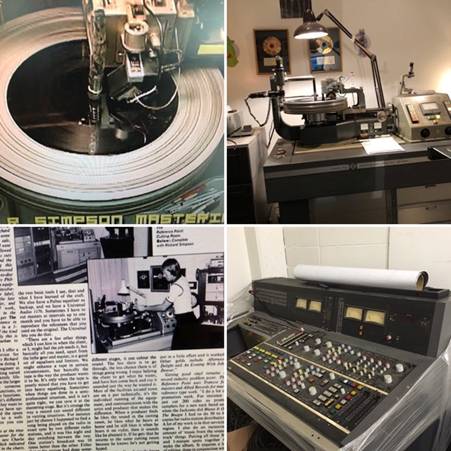 Cutting Stereo Low-End
Cutting Stereo Low-End
It wasn't until I started working with Pete Lyman in early 2000 that my approach to cutting the low-end changed. Like I said, the low-end EQ roll-off or monoing the bass was the norm. Pete questioned this practice and didn't think we should cut all records using elliptical equalizer (EE), instead to try using a more or less EQing of bass frequencies and not just rolling off and monoing the overall bass frequencies.
For the most part, the sound was a fuller more pleasing sound when bypassing the use of VRO or EE in the transfer from a source to a master disk. To the other extreme, while cutting at RCA Hollywood in the mid-seventies, we were cutting all the Motown releases using a graphic equalizer called the Motown filter, we had a standard practice of cutting off everything below 70 cycles and everything above 12khz. They wanted a loud punchy sound for radio air play.
To me, stereo bass was recording the bass guitar or other low-end instruments using the A/B stereo recording technique to create a sense of width in the recording. Another technique called Blumlein Pair will capture a greater portion of the room sound and adds a bit more ambience to the stereo image. The use of 2 bi-directional mics with figure 8 pattern placed 90 degrees so that their capsules coincide at a single point will give you this effect. In general, recording the bass in mono works better. Many believe our ears are not good at obtaining directional information from low frequencies, so it makes little sense to create a stereo image for any low frequency instruments.
Again, that's not always the case and many believe that stereo low-end adds to the overall sound experience. I myself agree with that statement. For example, listen to the band Dire Straits or records produced by Mark Knofler. When the music is heard on a record or streaming, the low-end surrounds you with a very full sound. That spaciousness of sound is the stereo low-end.
The cutting of stereo low-end will continue as it has. It comes down to if the recording is done right along with good mixing, the master lacquers will be cut and sound as close as possible to the source material. DMM is affected the same way as conventional mastering. The DMM process cuts directly into a copper disk skipping the lacquer mastering step. In theory, the noise level should be lower and the issue of pre and post echo should not occur.
When I first started cutting at RCA, the releases were cut in mono and stereo. The first Monkees album is a good example of mono versus stereo. If you can find a mono record, you can hear a big difference in level. The mono was cut 3 to 4db hotter than the stereo version. After this release I was told to cut the mono and stereo at the same level.
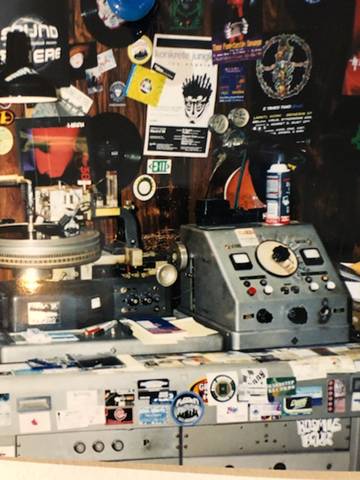 Cutting Jazz Records
Cutting Jazz Records
I cut a lot of Jazz records right after RCA closed its studios in HOLLYWOOD . Lester Koenig, the owner of Contemporary Records hired me even before RCA closed. He needed me to re-cut just about all his great jazz records from the catalog, because the mothers and stampers were all worn out.
Daily, I would compare a record to the master 2-track tape before cutting the master lacquers, making sure the sound and level matched the original pressing. Again, the mono records were louder than the stereo. Lester stated that his cutting engineer during the period when mono was being replaced with stereo found it hard to cut stereo at the levels of the mono records. This was caused by the placement of instruments the same as in the mono recordings. Bass off to one side, drums off center, piano centered and sax off to right of center. Cutting in mono had no problems, but stereo was a problem. I couldn't cut the same levels, too much vertical action, along with lateral groove swing and changes in the mix were needed. Centering the kick drum and bass helped solve the cutting issues.
Over the years, before I started working for Contemporary Records, several major figures in the music business worked for the label. Among them were Atlantic Records executive Nesuhi Ertegun, writer Leonard Feather, recording engineer and studio designer Howard Holzer, engineer Roy Dunan, and mastering engineer Bernie Grundman, and myself, honored to be among the names associated with Contemporary Records.
Some of the best sounding jazz records were produced at Contemporary. Again, an example of stereo low-end feeling of the room size and shape can give you that spaciousness sound; perceiving sound as coming from a multidimensional space. This low-end sound creates a shift from sounding like it is in your head to arrival from all around you.
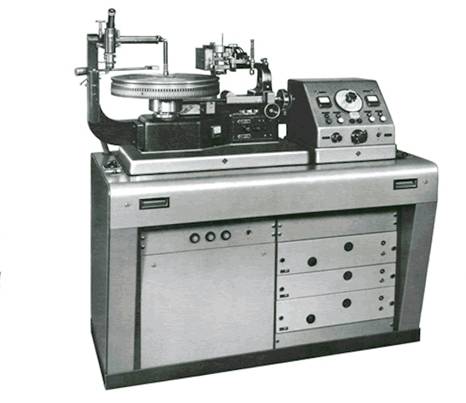 Vinyl Mastering
Vinyl Mastering
The use of equalizers, stereo widening plug-ins, compressors, limiters, spacial enhancers, multi-band, and so forth in the mastering or pre-mastering stage for vinyl as well as streaming is a sensitive subject. My approach goes against the grain. From my experience, in the cutting of records over the past fifty plus years "LESS IS BETTER'. When the artist, producer and engineer begin the recording process, the INTENT is to make the best sounding record possible using the best studios and gear available.
Once the final mix is ready for the cutting of the master disks, little or no change to the sound will be needed unless the above mentioned didn't do their job. Not to say that a touch of EQ wouldn't help in the final stage of mastering. It is my job to make sure the cutting system is reproducing the sound accurately (in a way that is correct in all details, exactly). This is my intent or purpose when cutting the master lacquers. I can't imagine producers/ engineers like Bob Simpson, Phi Ramone, Bruce Swedien, Al Schmitt or present day producer/engineer F.Reid Shippen handing over their final mastered files and telling me to do whatever I want or think should be done when cutting the master disks!!
We, as record cutters, can give our opinion, suggest minor EQ changes that might benefit the overall sound of the record. This is what a reference disk is used for- to cut one flat and another with a touch of EQ and let the artist, producer, and mix-engineer to decide which one sounds the best.
I must say - all bands or artists and engineers don't have the funds to take advantage of the best available when recording their projects. They do the best they can and rely on the numerous pre-mastering/ mastering rooms to also do the best they can do in the final mastering for records or streaming.
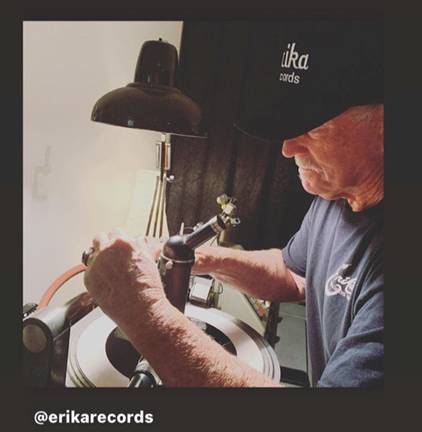 Spaciousness and Listening Experience
Spaciousness and Listening Experience
By doing some research, I realized that my definition of stereo bass is kind of wrong and, in some ways, right. I have been talking about the imaging or placement of instruments across an imaginary sound stage. Low-end bass is not about our ability to place the apparent location of an instrument at low frequencies, it is about a sense of envelopment or spaciousness at low frequencies. When the effect is present, it is what allows bass to sound like it is coming from outside of our heads.
This spaciousness creates a shift from sounding like it is in your head to a feeling of sound all around you. This is a better definition of stereo bass (taken from an article written by David Griesinger - one of the leading advocates for stereo bass). The room or size of the studio has a great effect on the overall sound experience. For example - the Count Basie sessions mentioned earlier.
Another process where you will hear stereo bass is the direct to disk recordings. I was involved in many over the years. My best memories come from a recording project involving three cutting systems: my AM32B Lathe with SX74 head, a VMS70 with custom Ortofon head, and a Westrex Scully system. The three of us - myself, Stan Ricker, George Piros, and John Meyer in charge of microphone placement in the vast hall. John had the scientific ability to place a few microphones in strategic locations, using acoustics to create a feeling that the sound was coming from all around you.
Three days of recording/ cutting along with eating whole lobsters... What a treat!!! The following week, all the involved parties got together to listen to all the test pressings from the 3 days of cutting. All the disks sounded great, but the Ortofon head won out for the most part because of its low-end response. Or maybe because of its name Ortofon that comes from the Greek words, meaning ORTO (correct) FON (sound).
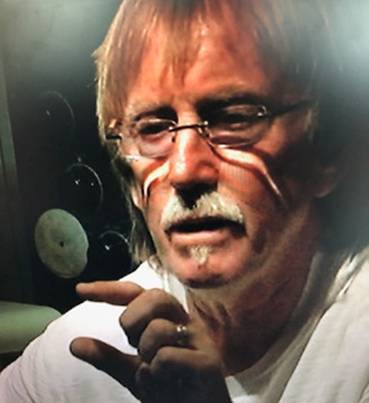 What's Next
What's Next
With the VINYL REVIVAL we've been experiencing over the past 10 years, maybe it's time to return to the fuller, more dynamic sound. Many great records are being produced on vinyl by the major labels and popular artists. Also, many projects that don't sound that great due to excessive EQ compression and less dynamics have become the norm. The mastering of music changed some time ago when digital replaced analog, with the decline of records, and CDs became how we heard our music. Presently, CDs are no longer the way consumers hear music. Streaming has become the choice of the masses, along with the revival of records, finding a whole new generation of vinyl fans.
What's next? For me, cutting records has been a lifelong involvement in music and the recording process. Maybe going back to how music was produced during the heydays of vinyl is the answer! Artists, producers, and engineers recording and mixing the project and then working closely with the cutting engineer. Get away from brick wall mixing, use less compression, bypass the overuse of plugins, and get back to a natural and more dynamic sound!!!


